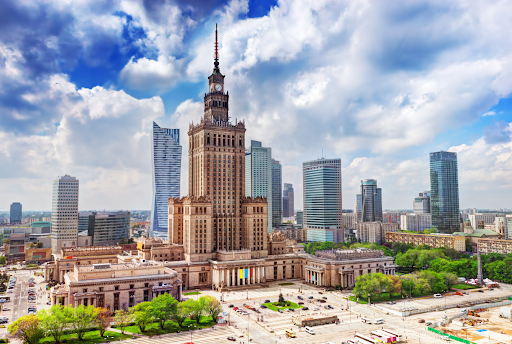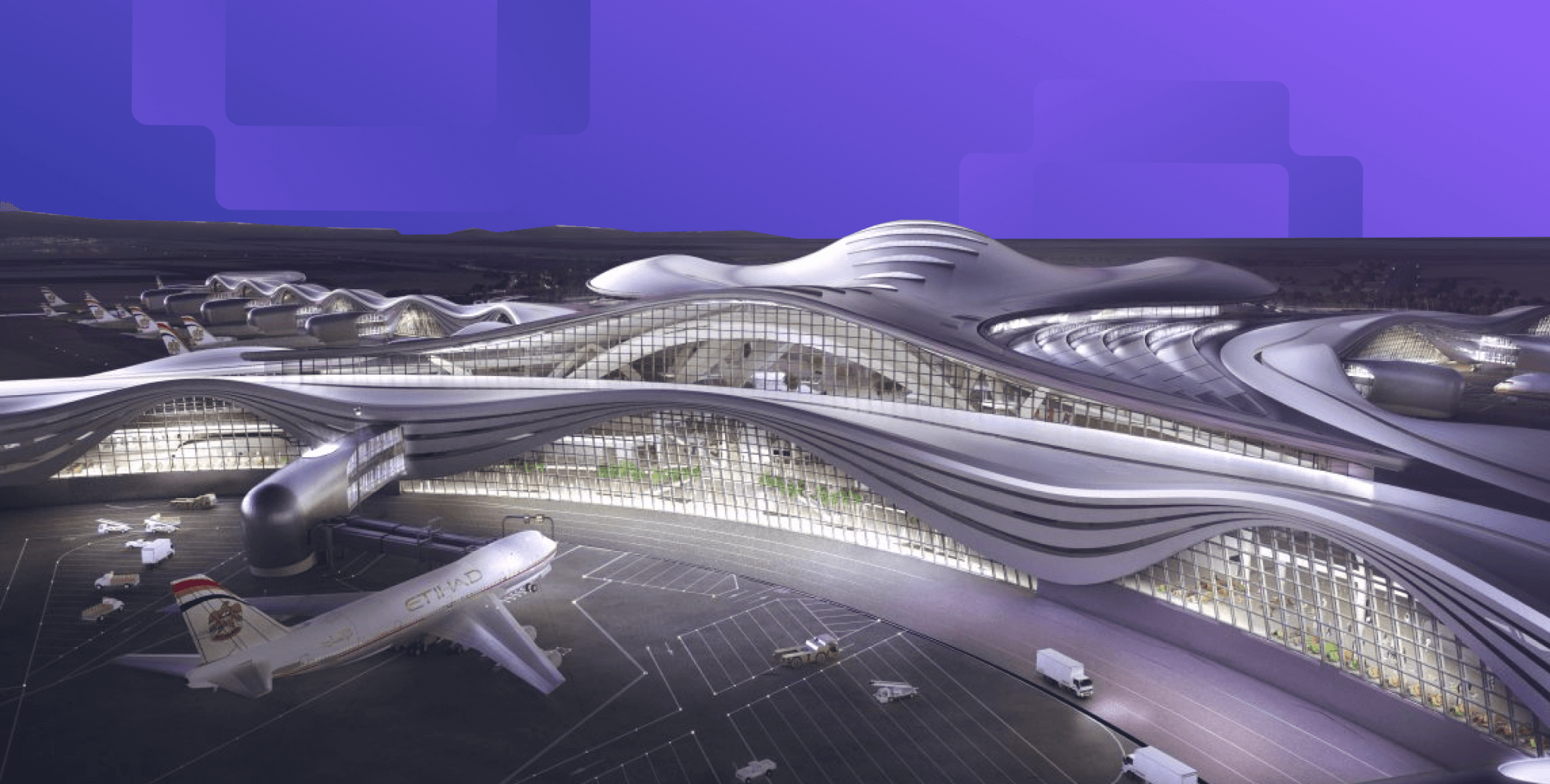Why Europe Doesn't Build Skyscrapers?

Table of Contents
The emergence of high-rise buildings across the globe has been a defining feature of modern urbanization. The trend of constructing skyscrapers began in the late 19th century and has since become increasingly popular in cities around the world. Skyscrapers offered a solution to limited land availability in densely populated urban areas, allowing cities to accommodate growing populations without sprawling into its suburbs.
High-rise buildings also became a status symbol for cities competing for attention on the global stage. In addition, the commercial potential of skyscrapers, particularly for office and residential space, made them an attractive investment for developers and investors to get higher profit.
Despite being highly developed and densely populated, Europe has relatively few skyscrapers compared to Asia and North America. Of the 400 built, 66% are in just five cities including London, Paris, Frankfurt, Moscow, and Istanbul.
When skyscrapers emerged in the 19th century, European cities were already well-established with historic architecture and evenly zoned layouts, leaving little room or demand for high-rises. A cultural divide also played a role, with Europe focused on preserving heritage while North America embraced modernity.
But today, the trend of constructing taller buildings is likely to continue as cities seek to accommodate growing populations and compete for attention in an increasingly globalised world.
Early Skyscrapers Around the World
.png?width=818&height=545&name=Skyscrapers%20in%20Chicago%20(1).png)
The early skyscrapers around the world were an embodiment of the ambition and innovation of that time, and they laid the foundation for the modern skyline of cities globally. Furthermore, the development of steel frame construction techniques and the invention of the elevator post-industrialization made it possible to aspire and build higher than ever before.
The first few skyscrapers in the world were built in the late 19th and early 20th centuries. The Home Insurance Building, completed in Chicago in 1885, is considered to be the world's first skyscraper. It stood ten stories tall and was constructed using steel frame technology, allowing it to support the weight of the building's structure and contents. The building's design also incorporated elements such as large windows and an open floor plan, which maximized natural light and ventilation, making it a prototype for modern office buildings.
In the mid-20th century, the trend of building skyscrapers spread to Asia and the Middle East, where rapidly growing economies and urbanization led to a surge in demand for office and residential space. Asia is the continent with the highest number of skyscrapers, with cities such as Hong Kong, Shanghai, and Tokyo boasting some of the tallest buildings in the world. Other cities with a significant number of skyscrapers include New York City in North America, London in Europe, and Dubai in the Middle East. In recent years, cities in China have been at the forefront of skyscraper construction, with over 100 buildings measuring over 200 meters tall constructed in the country each year.
Why Europe Doesn't Build Skyscrapers?

According to the Council on Tall Buildings and Urban Habitat, as of 2021, Asia has the largest number of skyscrapers in the world, with over 5,000 completed and under-construction buildings taller than 150 meters. North America follows closely with over 1,000 completed and under-construction buildings. While Europe has a few cities with notable skyscrapers, such as London, Frankfurt, Istanbul, Paris, and Moscow, the continent as a whole has significantly fewer skyscrapers than Asia and America. It has just over 400 completed and under-construction buildings taller than 150 meters. The key reasons why European cities have restrained themselves from constructing skyscrapers are mentioned below.
1. Cultural Affinity
The European subcontinent holds immense pride in its rich architectural heritage, and there is often a strong cultural value placed on preserving the historic character of the city. So, there has been resistance to the construction of tall buildings in Europe that might detach its cities from their historic cityscape. This sentiment is particularly strong in cities like Paris and Prague where there is a deep sense of attachment to the city's cultural identity and architecture.
Furthermore, Europeans believe that buildings should not only serve functional purposes but also have a positive impact on the community and environment. This has led to a preference for human-scale buildings that are integrated into the fabric of the city rather than dominating the skyline.
2. Pricey Real Estate
Land in European cities is scarce and tends to be more expensive than in other parts of the world. The urban heartlands of London, Paris and Berlin have some of the highest property rates. Coupled with stringent building regulations, it has made it challenging to construct skyscrapers in many European cities.
Many cities have zoning laws and building codes that limit the height of buildings and developers must obtain special permits, and undergo a rigorous approval process before constructing tall structures. These restrictions aim to preserve the city's architectural heritage but they also limit the amount of available land for new construction. The cost of constructing a skyscraper in Europe can be prohibitive for developers, making it more practical to build lower, denser structures.
3. Brusselization
Brusselization is a term used to describe a period of rapid urbanization and modernization in Brussels that took place during the 1960s and 1970s. The term "Brusselization'' was coined to describe the widespread demolition of historic buildings and the construction of new high-rise buildings in the city. Many of these buildings were criticized for their architectural style and their negative impact on the city's historic character.
Critics argued that the construction of these buildings destroyed the city's cultural heritage and identity that eventually led to the creation of stricter building regulations in Brussels and other European cities. The legacy of Brusselization remains a cautionary tale for city planners, developers, and policymakers, reminding them of the importance of preserving a city's cultural heritage while also promoting sustainable urban development.
4. Lack of Sustainability
Traditional buildings are often constructed using locally sourced materials that are more sustainable than the materials used in modern high-rise construction. Traditional buildings were designed to work in harmony with their natural surroundings, using passive design strategies such as natural ventilation and shading to maintain a comfortable indoor environment. On the contrary, modern high-rise buildings rely on energy-intensive heating, cooling, and lighting systems to regulate indoor temperatures.
Additionally, many European cities are located in densely populated urban areas where space is limited and the historic city center is already well established. Building tall structures in these areas would require the demolition of existing buildings and the disruption of the existing urban fabric. Therefore, Europeans are not supportive of constructing skyscrapers.
Read: What are Passive Design Strategies & Their Importance in Architecture
5. Post-War Architectural Restoration and Conservation
The devastation caused by World War II left many European cities in ruins, causing an urgent need for reconstruction. Following the aftermath of the war, there was a strong emphasis on restoring the architectural heritage that had been destroyed. This restoration effort focused on rebuilding historic buildings and urban areas using traditional construction materials and techniques. The restoration to pre-war architecture was seen as a way to preserve cultural identity and rebuild a sense of community after the trauma of war.
This focus on cultural heritage led to the establishment of laws and regulations that sought to protect historic buildings and urban areas. As a result, the construction of new buildings, particularly tall buildings, became subject to strict regulations that prioritized the preservation of cultural heritage.
The Prevailing State of High-Rise Construction in Europe
The architectural, engineering and construction (AEC) industry in Europe is experiencing a period of innovation and experimentation with new materials, techniques, and styles. The focus is on creating sustainable buildings that are visually striking and integrate with the surrounding environment. Skyscrapers, in particular, have been a topic of discussion among architects and urban planners in Europe, with some cities showing an increased interest in building tall structures.
The future of skyscrapers in Europe is uncertain and dependent on several factors. While some cities have shown an increased interest in building tall structures, others remain reluctant due to concerns about the impact on the city's character and skyline. Additionally, building regulations and public opinion along with well-thought-out policymaking, play a significant role in determining whether skyscrapers will be developed in a particular city.
Advances in engineering technology and materials have made it possible to construct taller, safer, and more sustainable buildings, making them more attractive to developers and investors. Additionally, the economic benefits of building tall structures, such as increased office and residential space, can be a significant driver for cities looking to expand their urban centers.
In Conclusion
While the future of high-rise construction in Europe remains uncertain, its cities are witnessing a debate about the need to preserve their cultural heritage and keep up with their people’s opinions. As Europe seeks to balance the demands of the present with the legacy of its past, skyscrapers will continue to be a topic of interest among architects, urban planners, and city officials across the continent.
Thus Novatr offers you a Computational Design Course that will help you understand computation in different design fields with industry workflows, and advanced tools for a concrete foundation in computational design. Bag opportunities along with professional certification, endless career possibilities, and upskilling.

 Thanks for connecting!
Thanks for connecting!


.png)
-1.png)




